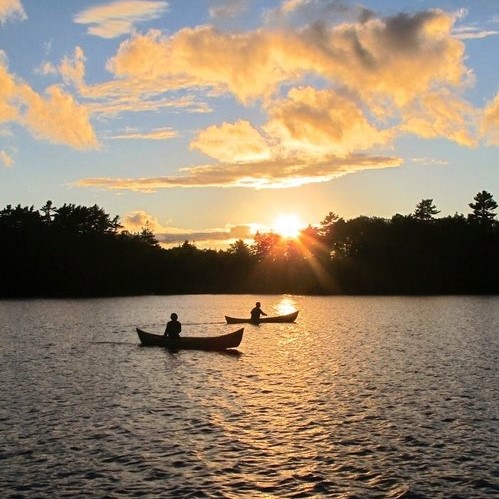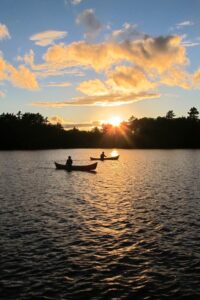

Our holiday weekend this month marks Maine’s third observance of Indigenous Peoples’ Day. The holiday is an opportunity for those of us who live here in the land of the Wabanaki to reflect on our relationship to the land and to the people who have lived here for millennia. It’s also an opportunity for Freeport Historical Society, as “the keepers of the stories,” to reflect on the larger context of the stories of Freeport.
We live in the homeland of the Abenaki and Wabanaki peoples, the people of Wabanakik, the Dawnland. What we call Freeport was previously called the Harraseeket district of North Yarmouth. It is the tidal waters of the Harraseeket River that drew the earliest European settlers to this land, just has it drew those who first named the river centuries before. We know quite a bit about the early European settlers who formed the villages along this river, because they kept journals, logs, titles, and other records. It has been easy to imagine our history begins with these settlements, but this easily accessible history of the last 400 years is just recent history. We know that people have lived and worked seasonally along the Harraseeket for over 10,000 years. That is also part of our history, but it is a harder history to uncover, and sometimes a harder history to face.
Even recent history is easy to lose. We have no record of why Freeport has that name, or why it was chosen when the town was established. We also have no clear understanding of the earlier name Harraseeket. It has been suggested to mean “river of many fish” or even “full of obstacles.” Neither is supported by what we know of the Abenaki language, and yet both are good descriptions of our history.
We have abundant opportunities to look deeper into the history and people of this land. We can cast a wider net for what we consider Freeport history – how the land was formed and shaped by time, how and why the first people came to this place, and those who followed them – just as we try to understand those who came from across the sea, and those that still come here to this day from all directions. But deeper understanding is also full of obstacles.
One of the obstacles we need to face is that in many cases we have chosen not to view this history as our history. Our focus on early European setters and their descendants has often led to personalizing their stories while marginalizing, objectifying, or vilifying the indigenous people they encountered in this land. Broadening and deepening our understanding the many peoples of this land is necessary if we are to try to tell the whole story of our history. As an organization, we have work to do.
We regularly receive inquiries about the history of Native American people in this area, and we direct them to other sources in Maine because we simply don’t have detailed information. We often direct people to the Abbe Museum in Bar Harbor as a wonderful resource to learn more about the Wabanaki people, online or in person. This holiday is a great opportunity to do just that.
What connects us through time is the land, however and whenever we or our ancestors came here. Indigenous Peoples’ Day encourages us to recognize that the first peoples to come are still in this land, and their stories need to be shared and heard. Perhaps in the sharing of these stories as a part of our shared history, together we will see a new dawn in the Wabanakik.
Eric C. Smith, Interim Executive Director



